Bitter milestone Three years after invasion, unceasing Russian bombardment, Trump’s callous betrayal a double blow for Ukraine
Read this article for free:
or
Already have an account? Log in here »
To continue reading, please subscribe:
Monthly Digital Subscription
$0 for the first 4 weeks*
- Enjoy unlimited reading on winnipegfreepress.com
- Read the E-Edition, our digital replica newspaper
- Access News Break, our award-winning app
- Play interactive puzzles
*No charge for 4 weeks then price increases to the regular rate of $19.95 plus GST every four weeks. Offer available to new and qualified returning subscribers only. Cancel any time.
Monthly Digital Subscription
$4.99/week*
- Enjoy unlimited reading on winnipegfreepress.com
- Read the E-Edition, our digital replica newspaper
- Access News Break, our award-winning app
- Play interactive puzzles
*Billed as $19.95 plus GST every four weeks. Cancel any time.
To continue reading, please subscribe:
Add Free Press access to your Brandon Sun subscription for only an additional
$1 for the first 4 weeks*
*Your next subscription payment will increase by $1.00 and you will be charged $16.99 plus GST for four weeks. After four weeks, your payment will increase to $23.99 plus GST every four weeks.
Read unlimited articles for free today:
or
Already have an account? Log in here »
Hey there, time traveller!
This article was published 21/02/2025 (315 days ago), so information in it may no longer be current.
Winter came late to Kyiv this year, but when it did it was bitter.
In early February, after months of unseasonably mild weather, the wind began to snap and the snow fell in earnest, spreading a threadbare white blanket over the cobblestones and crumbling brick of the old city.
The snow fell on silent streets after midnight, emptied by wartime curfew. It fell on buildings wounded by near-nightly Shahed drone and intermittent ballistic missile attacks.
And it fell on Ukraine’s unofficial memorial to the fallen, a yellow-and-blue ocean of flags, flowers and framed photos at Kyiv’s famous Maidan Nezalezhnosti — or Independence Square.
MELISSA MARTIN / FREE PRESS Ukraine’s unofficial memorial to the fallen in Kyiv’s famed Maidan Nezalezhnosti — Independence Square.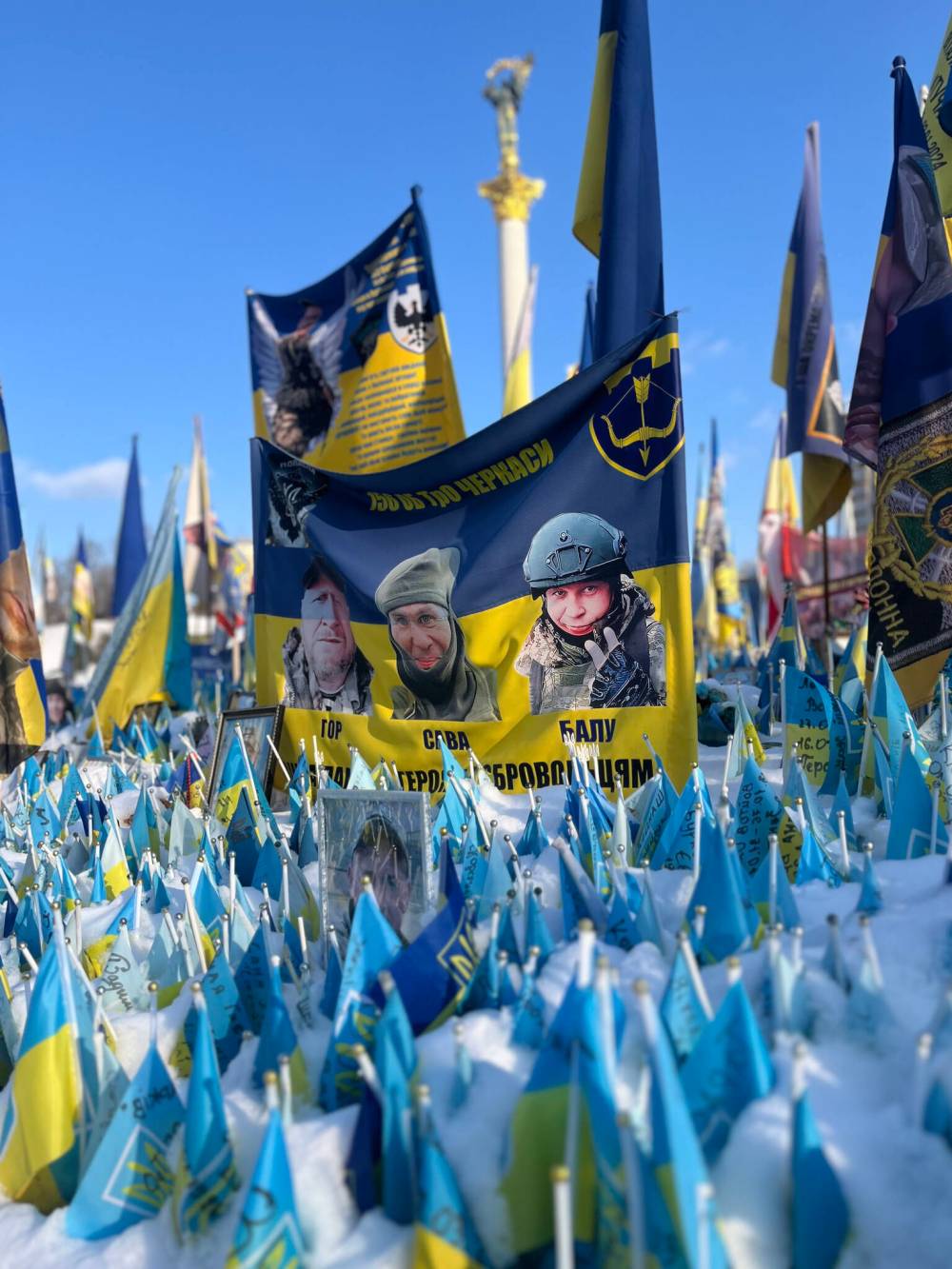
In the capital, over 600 kilometres from the front lines, the memorial’s evolution has been one of the starkest, most gut-wrenching images of the full-scale Russian invasion.
When it started in summer 2022, it was just a small garden of tiny Ukrainian flags on a grassy mound, haphazardly planted by grieving families, and not officially sanctioned.
Then it grew, and it kept growing.
It grew like all the best things in Ukraine, organically and from the grassroots, a vision created and tended by people without any specific authority giving guidance or direction. It grew until flags covered almost all the grass, and until the sheer number of them became almost unbearable to see.
Today, the memorial stands as an overwhelming visual testament to Ukraine’s bottomless abyss of grief.
A dense sea of tiny flags is crowned by large pennants and portraits emblazoned with the faces of the dead, arranged in clusters of people from one village, or one family, or one military unit. Narrow footpaths weave between the flags, so people can find and tend their loved ones’ markers.
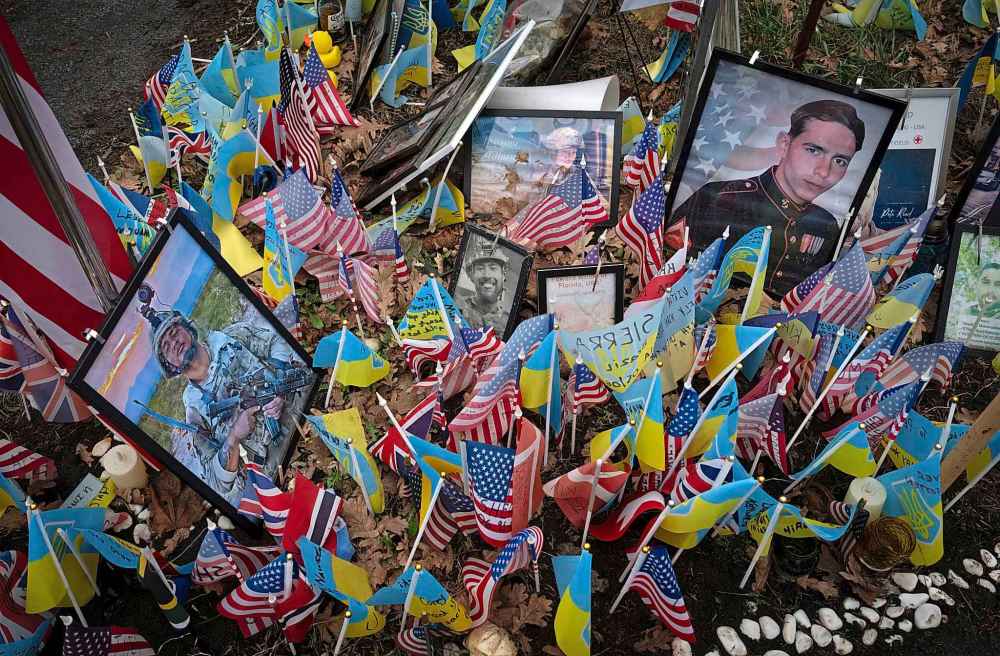
It’s impossible to count all the flags. Certainly, there are tens of thousands.
The vast majority, of course, are Ukrainian, but dozens of other countries’ banners are represented, including Polish, Belarusian, Swedish, Canadian and, in a sight that stings painfully in the current geopolitical moment, American.
Each of these flags was a life. It’s not an exact accounting of Ukraine’s war losses. Some of the dead have no flags at the square; others have more than one.
Still, to stare at the sheer number of banners, so tightly packed in places that snow can’t even penetrate to the ground, is to be confronted with the incomprehensible scale of what Ukraine has lost — or rather, of what has been taken.
It will have to mean something. Of all the challenges facing Ukraine now, that one is no less potent, for being the least material.
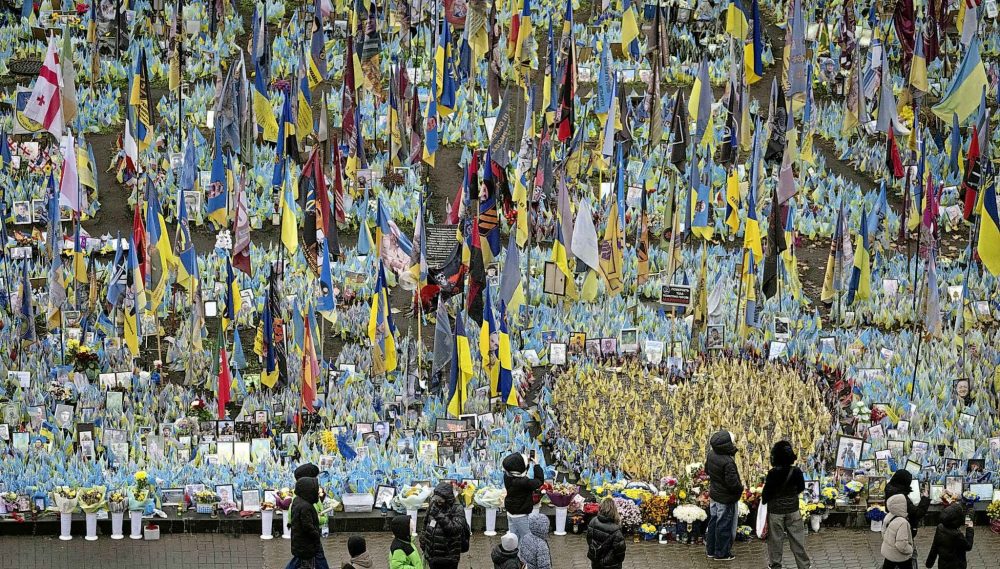
This Monday, Feb. 24, will mark three years since the full-scale invasion began. In that time, the country has been brutalized by its aggressor, and lately betrayed by its most powerful ally, but it has not broken.
Now, as Ukraine’s options for a path forward grow narrower, the country’s leaders are in an unenviable position. Ukrainians want more than anyone for the war to end; but for them to accept how it ends is not just a matter of land, or security or independence. For them to accept a conclusion, they will have to feel some semblance of justice for all they’ve lost. That their sacrifices meant something.
In that regard, Ukrainians, though exhausted by the war, remain widely committed.

This week, going into the grim anniversary, the general mood in Ukraine was given a shot of rejuvenated defiance following a set of high-level official meetings: the first between American and Ukrainian officials in Munich, and the other between American and Russian officials in Saudi Arabia, for what came across as a chat about how to divvy up and plunder Ukraine.
What came out of these meetings were a demand for Ukraine to hand over to the Americans US$500 billion in rights to yet-untapped mineral resources; a vague statement about “future co-operation … on historic economic and investment opportunities” which will come out of the war’s end; and a plan for Trump and Putin to meet for a peace negotiation, to which representatives of Ukraine and Europe aren’t invited.
On Tuesday, in a rambling press briefing at his Mar-a-Lago estate, Trump responded to Ukraine’s objection to its exclusion: “Oh well,” he retorted. “You should have never started it.” (Ukraine did not start the war, but in fact was invaded.) Russia, he added, “wants to stop the savage barbarianism.” (It is free to stop and go home at any time.)
But Trump said one other thing, that roused even more fervent ire in Ukraine. In a bizarre falsity, he claimed Ukrainian President Volodymyr Zelenskyy has a four per cent approval rating (the latest polls have him at 57 per cent), and that a peace plan must include him stepping down and calling new elections.
SVEN HOPPE / THE ASSOCIATED PRESS FILES In response to Trump's comments, many Ukrainians, including his critics, affirmed that, should the country be forced to hold elections, they’ll vote Zelenskyy back in.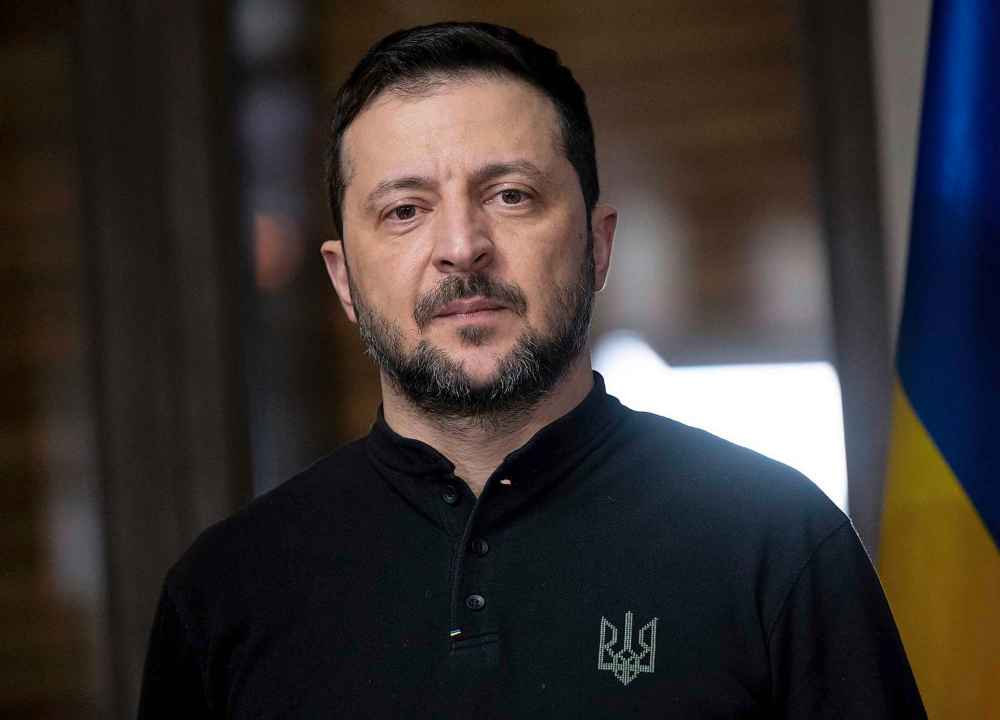
That ask is revealing. Removing Zelenskyy has been a key Russian demand since 2022, casting the president — elected by decisive popular vote in 2019, his five-year term extended only because Ukraine’s constitution suspends elections during wartime — as illegitimate.
It makes no sense for it to be America’s demand too, and Trump’s insistence the idea comes from his office is, to put it lightly, unconvincing.
The comments sparked a renewed unity in Ukraine. In the streets and on social media, Ukrainians were incandescent. Many, including vocal critics of the president, affirmed that, should the country be forced to hold elections, they’ll just vote Zelenskyy back in.
This is the likeliest outcome; Ukraine has spilled too much blood for its independence to be subverted by a foreign power. A vote is a much easier form of resistance to offer.
On Wednesday, even one of the most widely followed attack monitors — an anonymous social media account that delivers minute-by-minute reports of incoming air strikes — took the rare step of commenting on political events.
“Ukraine’s goal is not to succumb to these cheap manipulations,” the account wrote. “The goal of citizens is not to fall into despair. Washington has never understood the life of an average Ukrainian, so in this regard nothing has changed.”
And so it goes on, three years of trauma and counting. In some ways, everything has changed; in other ways, nothing has.
Ukrainians have long known that, whatever the public stance of their allies, they’d be defending themselves mostly alone. It hasn’t stopped them from carrying on, and Trump will not either.
MELISSA MARTIN / FREE PRESS The memorial serves as an overwhelming visual testament to the continued human cost the country is shouldering since Russia’s brutal invasion began three years ago.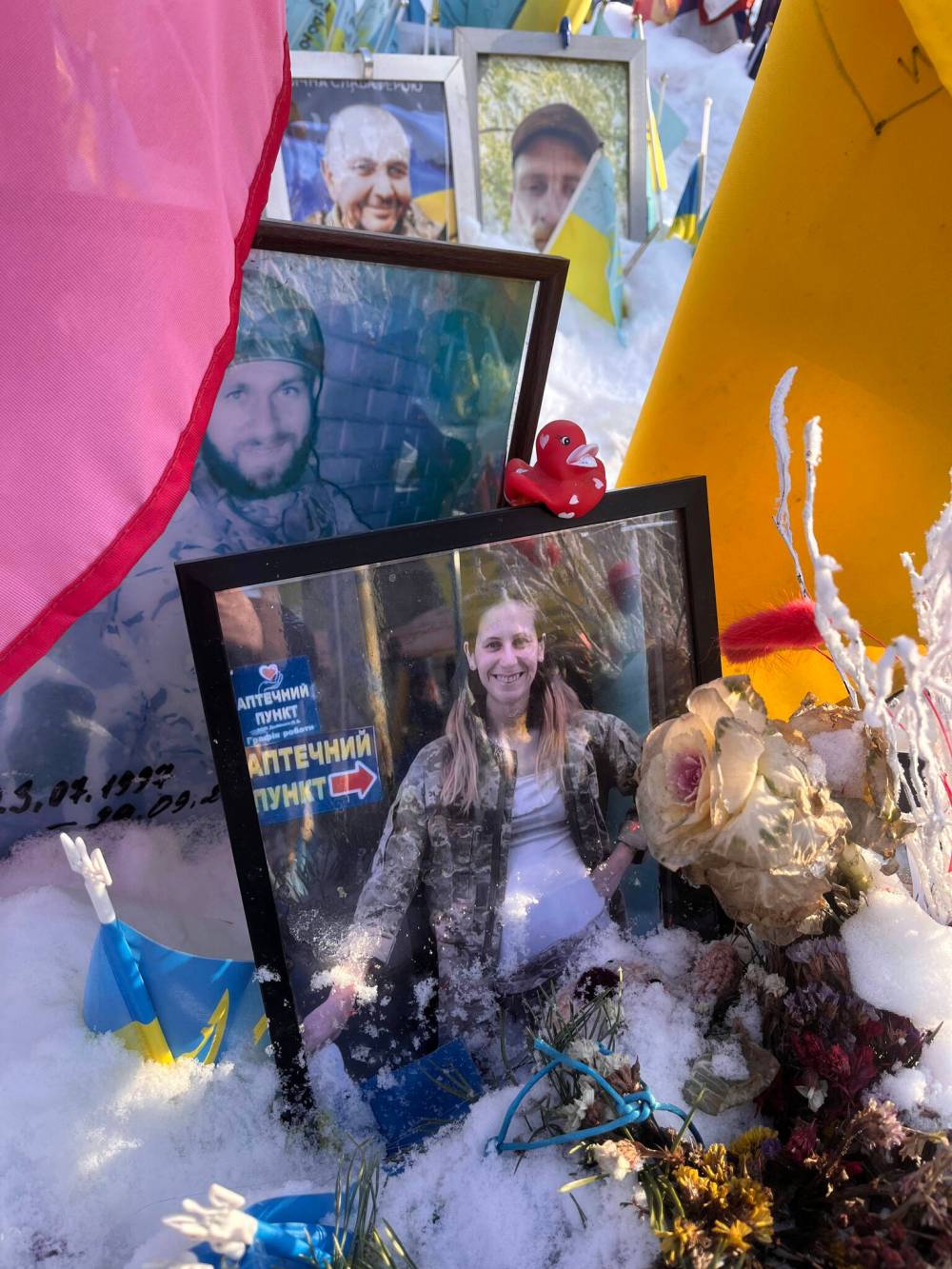
At the memorial this week, I sat for a while in front of the portrait of a friend, Maria-Kristina Dvoinik. A 32-year-old medic from Kyiv, she’d thrown herself into trying to save her country and its defenders.
She was evacuating wounded soldiers near Pokrovsk in November when a mortar hit her Nissan Pathfinder, retrofitted as an ambulance. A piece of shrapnel nicked her carotid artery, and she was gone.
That day, I cleaned the snow from her photo and flowers until my hands throbbed red with cold.
Nearby, a man in military uniform sat on the icy pavement, writing a name on a small Ukrainian flag.
Beside me, a young couple knelt silently before a portrait of a smiling, bearded soldier.
All around us, banners snapped and danced in the winter wind.
Her life, his life, every face staring out from the memorial, every name written in black marker on a tiny flag: whatever happens in this third year of full-scale war in Ukraine, may it secure a future where their sacrifice means something.
If that cannot be done, then we must ask, as we do far too often, how those wronged by history are ever to obtain justice in this world.
doubleemmartin@gmail.com

Melissa Martin
Reporter-at-large
Melissa Martin reports and opines for the Winnipeg Free Press.
Every piece of reporting Melissa produces is reviewed by an editing team before it is posted online or published in print — part of the Free Press‘s tradition, since 1872, of producing reliable independent journalism. Read more about Free Press’s history and mandate, and learn how our newsroom operates.
Our newsroom depends on a growing audience of readers to power our journalism. If you are not a paid reader, please consider becoming a subscriber.
Our newsroom depends on its audience of readers to power our journalism. Thank you for your support.











